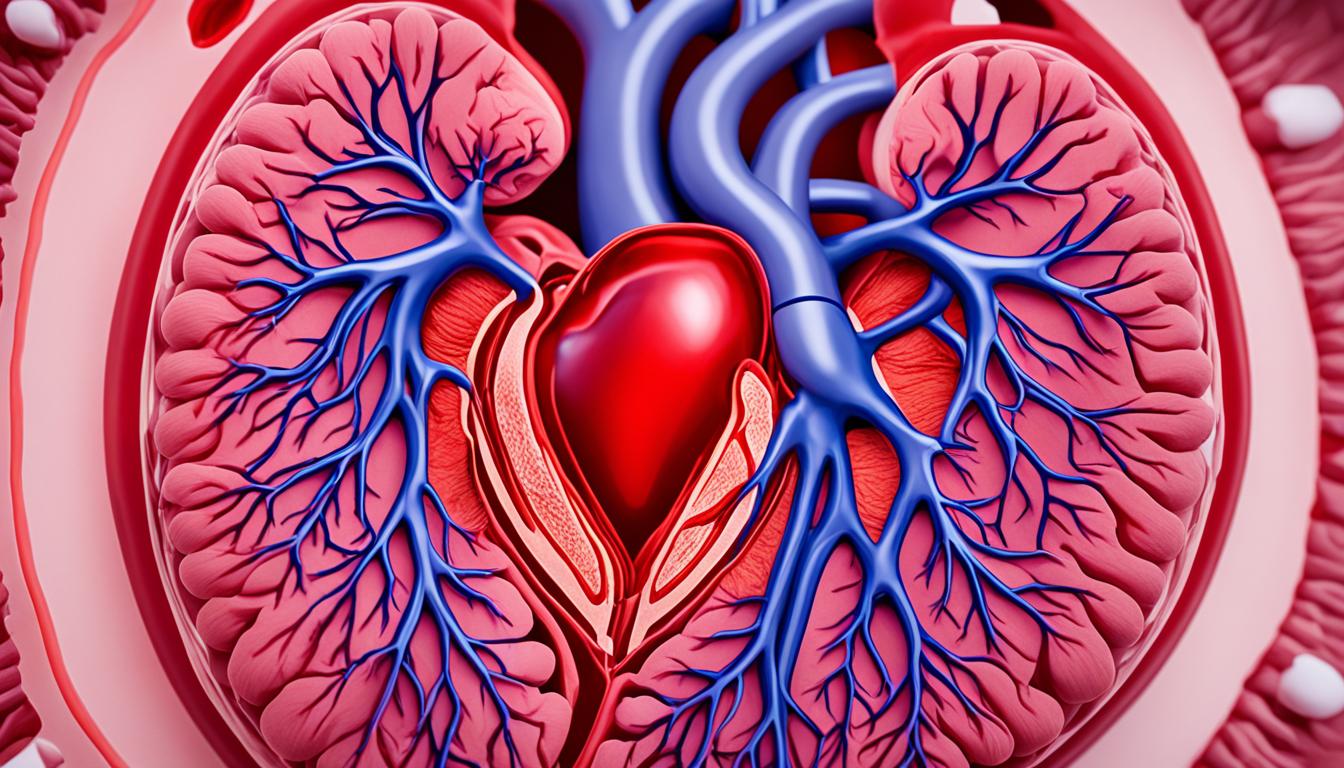Pulmonary valve stenosis makes the valve between the right bottom heart chamber and lung arteries narrow. This limits blood flow through the valve. It can decrease blood movement and affect the heart’s work. The effects can range from not needing treatment to needing medical care.
Often, this condition is present at birth. But, it can also happen as a result of other illnesses in adults. Symptoms vary by how bad the problem is. They might include a heart murmur, tiredness, shortness of breath, chest pain, passing out, and skin that looks bluish or grey, especially in babies.
Swift diagnosis and proper treatment are key. The exact reason for this condition is unknown. But, certain factors can raise the risk. These include getting German measles during pregnancy, Noonan syndrome, rheumatic fever, and carcinoid syndrome.
Pulmonary valve stenosis can lead to complications like heart lining infections, irregular heartbeats, thicker heart muscles, heart failure, and pregnancy problems. So, it’s very important to see a doctor. They can suggest the best care plan to keep your heart and health in good shape.
Key Takeaways
- Pulmonary valve stenosis is a condition characterized by the narrowing of the valve between the lower right heart chamber and the lung arteries.
- The severity of pulmonary valve stenosis can vary, ranging from mild to severe.
- Symptoms may include a heart murmur, fatigue, shortness of breath, chest pain, fainting, and bluish or gray skin in babies.
- Prompt diagnosis and appropriate treatment are essential to reduce the risk of complications.
- Factors like German measles during pregnancy, Noonan syndrome, rheumatic fever, and carcinoid syndrome may increase the risk of pulmonary valve stenosis.
Causes of Pulmonary Valve Stenosis
Pulmonary valve stenosis has both congenital and secondary reasons. The congenital causes are due to valve development issues. This includes absent valve leaflets or valve perforations. Though we don’t know exactly why these occur, they lead to a narrowed pulmonary valve. On the other hand, secondary reasons include heart issues like mitral stenosis and certain diseases. These can cause the pulmonary valve to narrow or become deformed, resulting in stenosis.
Overall, pulmonary valve stenosis stems from congenital valve issues and specific heart diseases. These lead to a narrow or deformed pulmonary valve. (Keywords: Pulmonary valve stenosis causes, congenital causes, secondary causes)
Symptoms and Diagnosis of Pulmonary Valve Stenosis
The symptoms of pulmonary valve stenosis change based on how serious it is. Some people with a light case might not feel any discomfort. But others with a bigger issue might feel tightness in their chest, tire easily, or find it hard to breathe.
Growth might slow down in kids or they might have a big belly. Feeling out of breath when doing something active is also common.
Doctors use a few tests to check for pulmonary valve stenosis. First, they will listen for a heart murmur during a checkup. They might then do more tests like an electrocardiogram, an echocardiogram, or a cardiac catheterization.
These check the problem and see how it affects the heart. This way, doctors can plan the right treatment for the patient.
| Diagnostic Tests for Pulmonary Valve Stenosis | Description |
|---|---|
| Physical Examination | A healthcare provider listens for a heart murmur, a sound caused by disrupted blood flow. |
| Electrocardiogram (ECG) | Records the electrical activity of the heart to identify abnormalities. |
| Echocardiogram | Uses ultrasound waves to create images of the heart, allowing for visualization of the pulmonary valve and blood flow. |
| Cardiac Catheterization | Involves the insertion of a thin tube (catheter) into a blood vessel and guiding it to the heart, allowing for direct measurements and evaluation of the pulmonary valve and surrounding structures. |
These tests tell doctors how serious the stenosis is. They guide doctors in choosing the best treatment.
Sources: Mayo Clinic, UpToDate
Treatment and Potential of Stem Cell Therapy for Pulmonary Valve Stenosis
The treatment of pulmonary valve stenosis varies by its severity. For mild cases, watching it with regular check-ups may be enough. In more serious cases, treatment might be needed. This could include a procedure called balloon valve repair. Here, a balloon is used to open the narrowed valve.
Sometimes, open heart surgery is the best option. This is needed if the stenosis is severe or affects the valve in different ways. During the surgery, doctors might fix the pulmonary valve. Or they might put in an artificial valve to replace it.
Recently, people are looking into using stem cells to treat heart defects. Early studies are showing some good signs. They suggest that using stem cells in treatment could be a game-changer for fixing congenital heart defects. But, more research is crucial to understand if this treatment could really work well in the future.
Sources: UpToDate, PMC4485350

